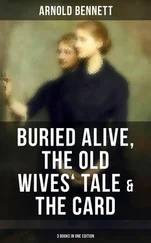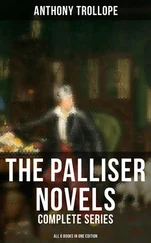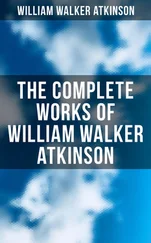III. Irony , or “a mode of speech in which the meaning is contrary to the words. The intention is mildly to ridicule undue pretensions or absurd statements while nominally accepting them unquestionably.” In irony , the real meaning is subtly suggested by the tone of the voice or the implication of the words. As for example when Elijah said to the priests of Baal, who were endeavoring to persuade their god to manifest himself in a miraculous manner: “Cry aloud, for he is a god . Either he is talking, or he is pursuing, or he is on a journey, or peradventure he sleepeth, and must be awakened I”
IV. Epigram , or “a sentence of brief and pointed character.” As for example Talleyrand’s famous saying: “Language was given to man to conceal his thoughts.” The epigram is often used with great effect, even when it implies a fallacy. Many people accept a snappy, pointed statement, cleverly phrased, as a self-evident truth—they delude themselves into believing that the epigram is an axiom . For this reason, and because it adds brilliancy and sparkle to a discourse, many speakers employ the epigram very freely.
V. Hyperbole , or “the figure of speech which depends upon exaggeration for its effect.” Blair says: “It consists in magnifying an object beyond its natural bounds. In all languages, even in common conversation, hyperbolical expressions very frequently occur; as ‘swift as the wind;’ ‘as white as the snow;’ and the like; and our common forms of compliment are almost all of them extravagant hyperboles.” Hyperbole is an inheritance from the Oriental writers, who indulge in it freely. It is a characteristic of the young writer or speaker, and often arises from a lively imagination which generally finds pleasure in magnifying things. Hyperbole also often results from an ardent temperament or aroused emotion, although it may also be caused by a keen sense of humor, in which case it takes on the attributes of irony . In addition to the examples given above, the following will serve to illustrate this figure of speech: “Saul and Jonathan were swifter than eagles , and stronger than lions .” “And trembling Tiber dived beneath his bed .” “ Swifter than the winds and the wings of the lightning .”
VI. Vision , or “the representation of past events, or imaginary objects and scenes, as actually present to the senses.” As for example: “Cæsar leaves Gaul crosses the Rubicon, and enters Italy;” or “They rally , they bleed , for their kingdom and crown.” The effect of the figure is produced by the substitution of the present tense for the past.
VII. Apostrophe , or “the turning from the regular course of the subject, into an invocation or address.” As for example: “Death is swallowed up in victory. O, death, where is thy sting? O, grave, where is thy victory?” It has the effect of turning aside from the auditor or audience and addressing some abstract principle, inanimate object, or person not present.
VIII. Personification , or “the attributing of sex, life, or action to an inanimate object, or the ascribing of intelligence and personality to an inferior creature.” As for example: “The sea saw it and fled ;” or, “The worm, aware of his intent, harangued him thus.”
IX. Interrogation , or “the asking of questions, not ·for the purpose of expressing doubt or obtaining information, but in order:to assert strongly the reverse of what is asked.” As for example: “Doth God pervert judgment? or doth the Almighty pervert justice?” The employment of this figure imparts life and animation. The Book of Job gives us one of the best examples of its effective use.
X. Exclamation , or “the expression of some strong emotion for the purpose of impression.” As for example: “Oh! the depth of the riches both of the wisdom and the knowledge of God!”
XI. Omission , or “the pretended suppression or omission of what one is actually mentioning all the time.” As for example: “ I say nothing of the notorious profligacy of his character; nothing of the reckless extravagance with which he has wasted an ample fortune; nothing of the disgusting intemperance which has sometimes caused him to reel in our streets—but I aver that he has exhibited neither probity nor ability in the important office which he holds.”
XII. Euphemism , or “the use of a delicate word or expression for one which is harsh, indelicate or offensive to delicate ears.” As for example: “ Intoxicated ” for “drunk;” “ passed away ” or “ passed out ” for” died;” “ casket ” for “coffin;” “ misappropriated property ” for “embezzled;” “ a disciple of Bacchus ” for “a drunkard;” “ a votary at the shrine of Venus ” for “a libertine;” “ limb ” for “leg;” “ vest ” for “undershirt; “ etc.
Of the above rhetorical figures, four (metaphor, metonymy, synecdoche, and irony) and often more, are frequently called “ tropes .” A Trope is: “a figurative use of a word; a word or expression used in a different sense from that which it properly possesses, or a word changed from its original signification to another for the sake of giving life or emphasis to an idea, as when we call a stupid fellow an ass, or a shrewd man a fox.” Blair says: “Figures of words are commonly called tropes , and consist in a word’s being employed to signify something that is different from its original and primitive, so that if you alter the word, you destroy the figure.”
Carlyle says of figures of speech: “Thinkest thou there were no poets till Dan Chaucer? No heart burning with a thought, which it could not hold, and had no word for; and needed to shape and coin a word for,—what thou callest a metaphor, trope, or the like? For every word we have, there was such a man and poet. The coldest word was once a glowing new metaphor, and bold questionable originality. ‘Thy very Attention , does it not mean an attentio, a stretching-to? ’ Fancy that act of the mind, which all were conscious of, which none had yet named,— when this new ‘poet’ first felt bound and driven to name it! His questionable originality, and new glowing metaphor, was found adoptable, intelligible; and remains our name for it to this day.”
Chapter IX.
Discoursive Expression
Table of Content
THE VERB “to discourse” means: “To treat of; to talk over; to discuss; to relate; to debate; to reason; to pass from premises to consequences; to treat upon anything in a formal manner by words; to dilate; to hold forth; to expatiate; etc.” “Discoursive” of course means: “Of, or pertaining to reasoning or discourse.” By Discoursive Expression is meant the expression of one’s ideas or thoughts in the form of discourse.
The authorities recognize four distinct forms or phases of Discoursive Expression; viz., (1) Descriptive Discourse; (2) Narrative Discourse; (3). Expositive Discourse; and (4) Argumentive Discourse. Descriptive Discourse is that form of discourse in which the attributes, properties, qualities and relations of persons or things are explained in the form of a representation of them as they appear in the mind of the speaker. Narrative Discourse is that form of discourse in which acts or events are related in the form of a story. Expositive Discourse is that form of discourse in which the subject or object is analyzed and explained in detail, and definitely. Argumentive Discourse is that form of discourse in which an effort is made to so present the subject as to influence the opinion and understanding of the hearer, and to move his will.
Читать дальше












